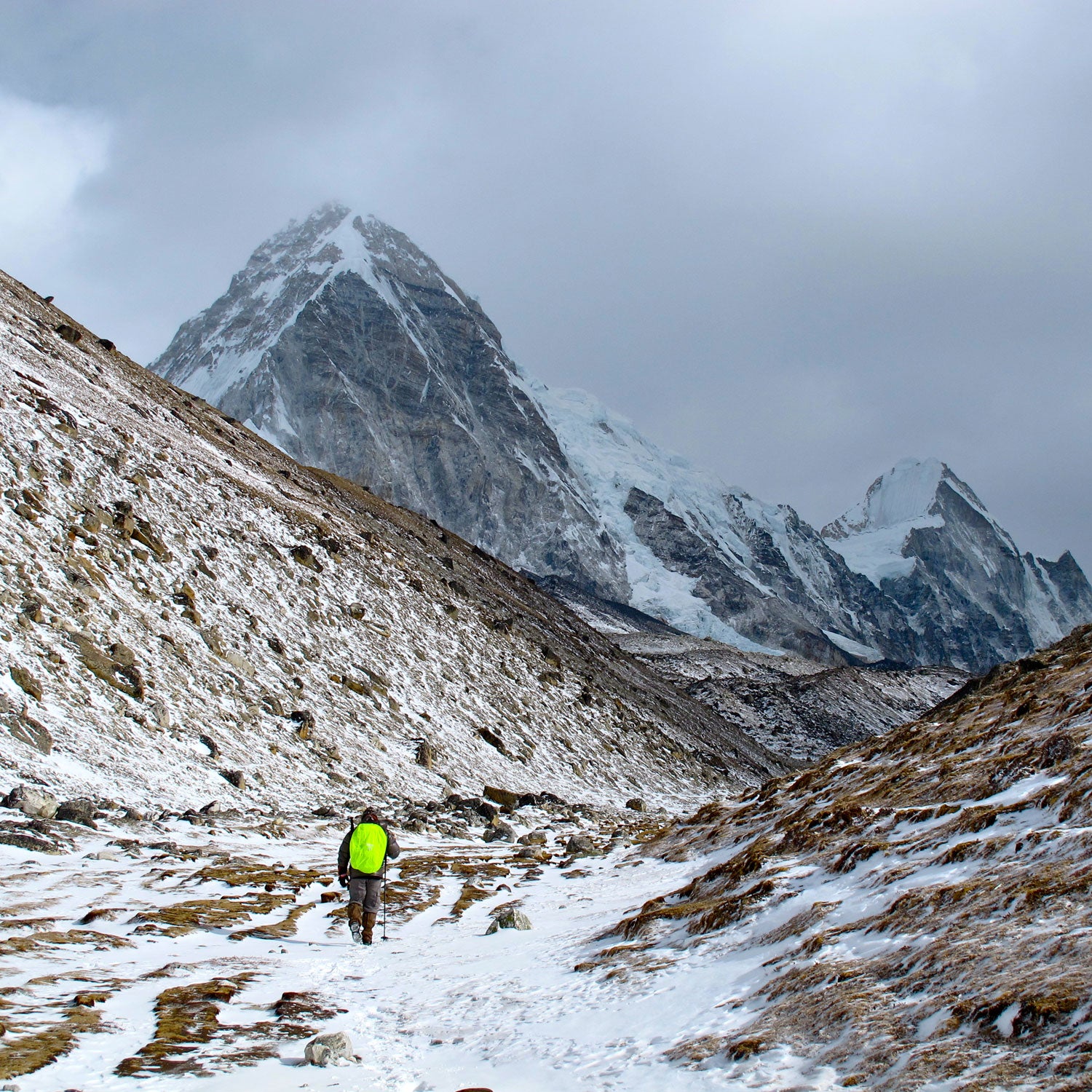By the late 1980s, Mount Everest had a problem. Trails in the region, and even the slopes of the revered peak, were experiencing a major side effect of 30 years of climbers coming to the area: garbage.
“They used to say, ‘One can easily reach Everest Base Camp by following the toilet paper trail,” says Yangji Doma Sherpa, a spokeswoman for the (SPCC). What’s worse, no one was there to pick up the roughly 30,000 pounds of human waste and 50,000 pounds of burnable waste created each year by climbing teams on the region’s most popular peaks.
That led to the creation of the SPCC. Beginning in the late 1980s, Ngawang Tenzin Zangbu, of the region’s most important monastery, the , began working with Mingma Norbu Sherpa, a local who had risen high in the ranks of the World Wildlife Fund, and started campaigning to clean up the Khumbu valley. In 1991, they founded the non-profit SPCC specifically to deal with the trash and waste problems. It soon began undertaking projects like building toilets at the base camps of Ama Dablam and Island Peak and installing trailside garbage bins and beginning door-to-door garbage service for lodges in the Khumbu’s largest villages.
But as the SPCC worked to keep the valley clean, they encountered a new problem: Garbage collection is expensive. While the SPCC receives some money from Sagamartha National Park, Doma says each year they only get a small percentage of the overall fees collected by the park. (The SPCC did not provide numbers. Getting hard numbers from any Nepalese governmental agency—or NGO—is next to impossible.)
So, in the late 1990s, the SPCC came up with another way to raise funds: The Icefall Doctors. Financed by the SPCC, the Icefall Doctors are a group of roughly eight Nepalese that set a route of ladders and fixed ropes through the Icefall to Camp I before guided clients arrive. Before the Doctors, western outfitters and climbing Sherpas worked together to piece together to set the route. Though it was a departure from the organization’s original mission, the SPCC took over maintenance of the route in 1997 and charged climbers $500 each. (That amount was raised to $600 this year.) In recent years, as the number of climbers on the mountain has exploded, that has created hundreds of thousands of dollars in revenue. (The SPCC said it couldn’t confirm that number, which ���ϳԹ��� calculated based on the number of successful summits each year.) The SPCC says it then uses excess funds to finance the garbage program.
While virtually the entire Everest community agrees with the need for waste management, and many applaud the SPCC’s work down valley, questions surround the distribution of Icefall revenue. Many climbers say that the quality of gear used in the Icefall—from ladders the Doctors’ personal ropes, boots, and packs—falls below what that kind of money should produce.
“Last year’s tragedy showed some of the real problems with saving money on the route,” says Dave Hahn, a guide with who has summited Everest 15 times. A week before last year’s tragedy Hahn had asked the Doctors to double up ladders in the points threatened by avalanches. “I’d like SPCC to field the strongest, best equipped, most experienced squad of Icefall Doctors that they can. Sadly, things have been going in the other direction in recent years,” says Hahn. “It's no surprise that they hadn’t been able to accomplish that. They were doing the best they could under the circumstances. I’d just like to see some different circumstances.” Hahn says that in recent years, the Doctors have even relied on gear donations from Western outfitters in order to be properly equipped.
“I’d like SPCC to field the strongest, best equipped, most experienced squad of Icefall Doctors that they can. Sadly, things have been going in the other direction in recent years.”
While the number of climbers has doubled over the years, funding for route setting has not increased, and the SPCC’s focus has remained on initiatives that deal with the regional garbage problem. Because of that, many have argued that it’s time for outfitters, the SPCC, and the government to give the Doctors more and better resources. “Their personal gear could be improved,” says Pete Athans, a veteran guide who helps train the Doctors each year. “The ladders and rope quality could be improved significantly.” That’s not to mention things like helicopter flights to help them plot the route, and higher wages. (The Doctors make significantly less than the Sherpas who work above Base Camp—despite spending far more time in the Icefall.)
“As good as [Icefall Doctors] like Ang Sarki Sherpa and Nyima Dorje Sherpa are, there were only six of them last year,” Athans says. “I think having more eyes is going to be critical.”
To do that, though, someone—either outfitters or the SPCC—will need to cough up. Some outfitters say they’d be willing to step up, although years of stagnant investment in the Icefall have bred skepticism of the SPCC that may be hard to overcome.
“There are a lot of things that need to change but ultimately there are a lot of smart people trying to garner support and make it happen,” says Athans. “There’s been a tremendous outpouring of ideas and effort since the avalanche. If we don’t take advantage of that, that’s the real tragedy.”


